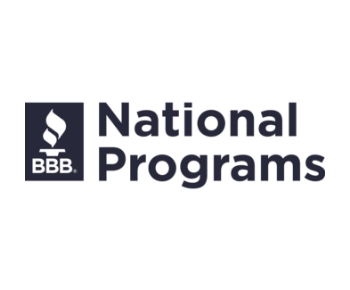Search for a Movie Rating
Resources & FAQS
Frequently asked questions
 About the Film Ratings
About the Film Ratings
The ratings are meant to help parents/guardians determine whether a particular movie is appropriate for their child(ren) to watch, while at the same time, protect the First Amendment Rights of filmmakers. Ratings are assigned by a board of parents who consider factors such as violence, sex, nudity, language, drug use, smoking and thematic elements, and then give each movie a rating they believe a majority of American parents would give the movie.
Raters are all current parents. They are not industry experts, but rather represent the film rating’s intended audience: current parents who are making viewing decisions for their children. When a rater first joins the board, they must have a child between the ages of five and 15, and they can serve up to seven years or until their youngest child turns 21.
The Rating Board is comprised of moms and dads from different geographical locations, ethnicities, political leanings, religious beliefs, and age of children. We strive to reflect communities across the nation and families from all walks of life.
All the identities of raters, except for senior raters, are kept confidential to avoid outside pressure or influence. Senior raters are selected by the Chair from among the raters. Those selected have experience and have demonstrated good judgment in the rating of films. They serve as points of contact with the film submitter to answer any questions about the rating of a film.
The rating board watches every rated film in its entirety, and considers various elements within the context of the whole film. At the end of the film, each rater submits their vote for the rating they think the movie should receive and why. The Senior Rater assigned to that film then leads a discussion of the group during which the rating and rating descriptor is determined by a simple majority vote of the raters.
Raters consider a range of elements including violence, language, sex, nudity, drugs, smoking, and other thematic elements or situations they think would be of particular concern to most American parents. Additional details on these elements can be found here.
Descriptors are an equal part of the rating. The ratings are G, PG, PG-13, R, and NC-17. The descriptor is the information in the box that tells parents why the movie received that rating. For example, if a movie is rated PG-13 for language and nudity, then the descriptor tells parents that there is a level of language and nudity that might not be appropriate for their younger children. The only rating not accompanied by a descriptor is G.
Additional details on descriptors can be found here.
The film rating system has withstood the test of time, because as American parents’ sensitivities change, so too does the rating system. That’s why it is so important that current parents serve as raters.
Additionally, elements such as violence, language, sex, nudity, drug use and smoking are continually reevaluated through national surveys of parents to mirror contemporary concern and to better assist parents in making viewing choices that are right for their family.
Yes! In fact, our 2023 survey of American parents showed that 91% of parents find film ratings help them make better movie choices.
The rating and accompanying descriptor are not judgments of the quality or the value or the social importance of a film. They only identify the level and type of content within a particular movie.
No. It is not the film rating board’s purpose to prescribe social or political policy, but instead to reflect the current values of the majority of American parents. The rating system does not make any judgment or determination on what content may be depicted in movies – that is the role of the creatives. The rating board rates the movies that are submitted but does not attempt to control storytelling in films.
Our ratings are voluntary. However, MPA members agree to submit all films for a rating that have a theatrical release. Independent studios and filmmakers are not required to have their films rated, but many choose to do so for theatrical runs because most theaters prefer to exhibit rated films.
As the media landscape continues to evolve, most streamers submit their feature film for a rating because of the trust we have built among parents and filmmakers over several decades.
The TV Parental Guidelines Monitoring Board is responsible for oversight of the TV ratings. However, the MPA is part of the Monitoring Board.
Ratings are intended to help parents make smart, informed decisions about viewing choices for their children.
Most movie theaters in the United States, as members of Cinema United, enforce the ratings at their facilities. Two ratings are restrictive: R and NC-17. R indicates the film contains some adult material, and parents are encouraged not to take young children.
Although the ratings themselves do not prohibit parents from bringing younger children to an R rated movie, many theaters have their own policies regarding admittance into R rated movies. NC-17 indicates the film is patently adult, and children are not admitted even if accompanied by an adult.
No. Our ratings are only used by American audiences. Every country has their own system for rating and classifying movies.
Quite the opposite! The rating system was developed as a voluntary, industry-led alternative to government censorship. It provides information to parents while protecting filmmakers’ First Amendment rights and their freedom to create without the threat of government censorship.
Frequently asked questions
 About the Advertising Administration
About the Advertising Administration
The CARA Advertising Administration is responsible for the review of all advertising and publicity materials created for motion pictures submitted for a rating, prior to their use and distribution to the general public. They enforce the advertising standards and are held accountable for a fair review of all materials submitted by member companies and independent distributors.
- For In-Theater trailers: We consider many factors to ensure their compatibility with the feature and with a feature’s target audience.
- For TV: We consider compatibility to the programming content, broadcast time, and audience demographics.
- For Online Content: We consider the compatibility and user base age demographic breakdown for the intended online destination.
- For Outdoor Print Advertising: We consider the compatibility of the billboard, bus shelter, or poster with the location it will be placed, and which consumers will likely encounter it.
The CARA Advertising Administration is responsible for the review of all advertising and publicity materials created for motion pictures submitted for a rating, prior to their use and distribution to the general public. They enforce the advertising standards and are held accountable for a fair review of all materials submitted by member companies and independent distributors.
Every movie that is rated by CARA agrees to have every piece of advertising reviewed and approved by the Advertising Administration.
No. However, we review every advertisement for any movie that is submitted for a film rating.
We review and approve every single piece of advertising and marketing material for every movie that is rated by CARA. This includes teasers, trailers, posters, billboards, signage on public transportation, social media ads, social media filters, etc. If it is a marketing material, the filmmaker agrees to us reviewing and approving it.
When we approve an advertisement, that means it has been approved for placement in a particular area (e.g., public billboard on a highway) or during a certain moment (e.g., a red band trailer can only be shown before an R or NC-17 movie). If we disapprove of the advertisement, it cannot be used for that placement.
Approving an advertisement does not mean we endorse any particular message or the value of the movie.
Please fill out our contact form, available here.
Frequently asked questions
 For Filmmakers
For Filmmakers
For questions about the film ratings process, click here.
This link will take you to detailed answers on the submission process, fee structure, and more.
TIPS TO BE “SCREENWISE”
MAKE THE MOVIE RATING SYSTEM YOUR OWN
Movie ratings give parents important information about a movie’s content, but it’s ultimately up to you to decide whether a movie is suitable for your family. Use our ratings as a guideline for setting your own standards, particularly the rating descriptors that give more detailed information on why the movie is in that rating category. Then, talk to your kids often to make sure your family standards work for you.
DO YOUR HOMEWORK
Understand how our ratings work and read up on a movie to make sure it contains the type of content you’re comfortable allowing your children to watch. Take advantage of great parent resources such as movie reviews, online sources for movie information and visit us often to learn more about the rating system, what type of content fits into each rating category and what type of content is in a particular movie.
DEVELOP A BUDDING MOVIE CRITIC
Movies create whole new worlds for children to explore and learn, and you can help ensure that journey is a rewarding and positive experience. Help your children choose a movie to watch and discuss the content and subject matter together.
KICKSTART A CONVERSATION AFTER THE CREDITS ROLL
Reinforce the positive values of a movie by sitting down with your children after the show and discussing what they saw. Use the movie as an educational aid, clearing up any misunderstandings and sharing new ideas.













